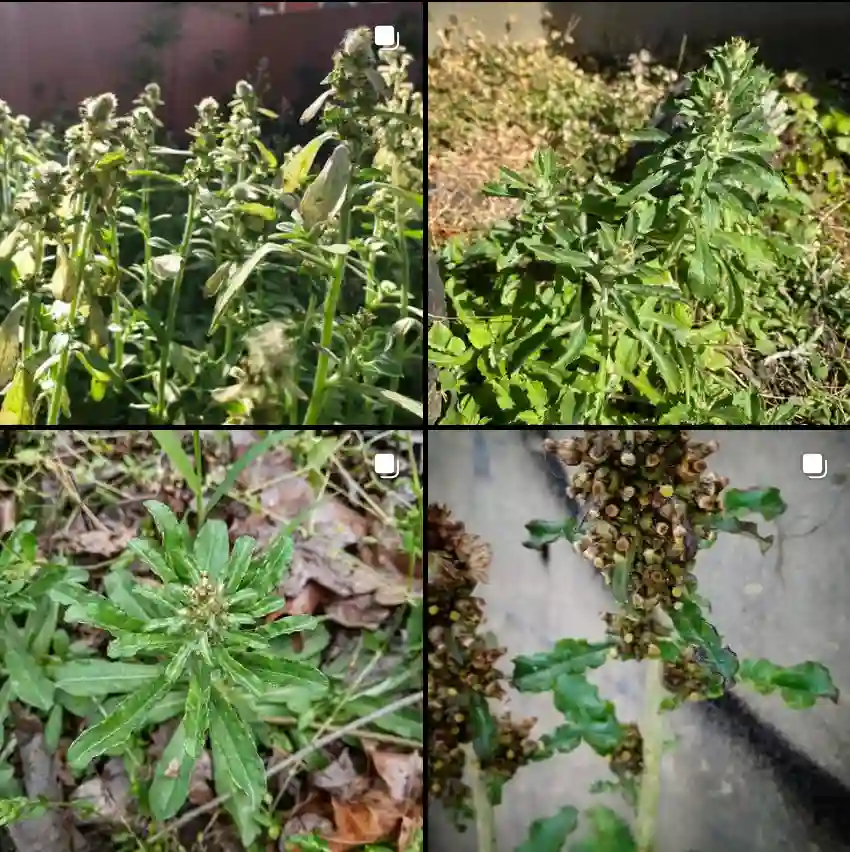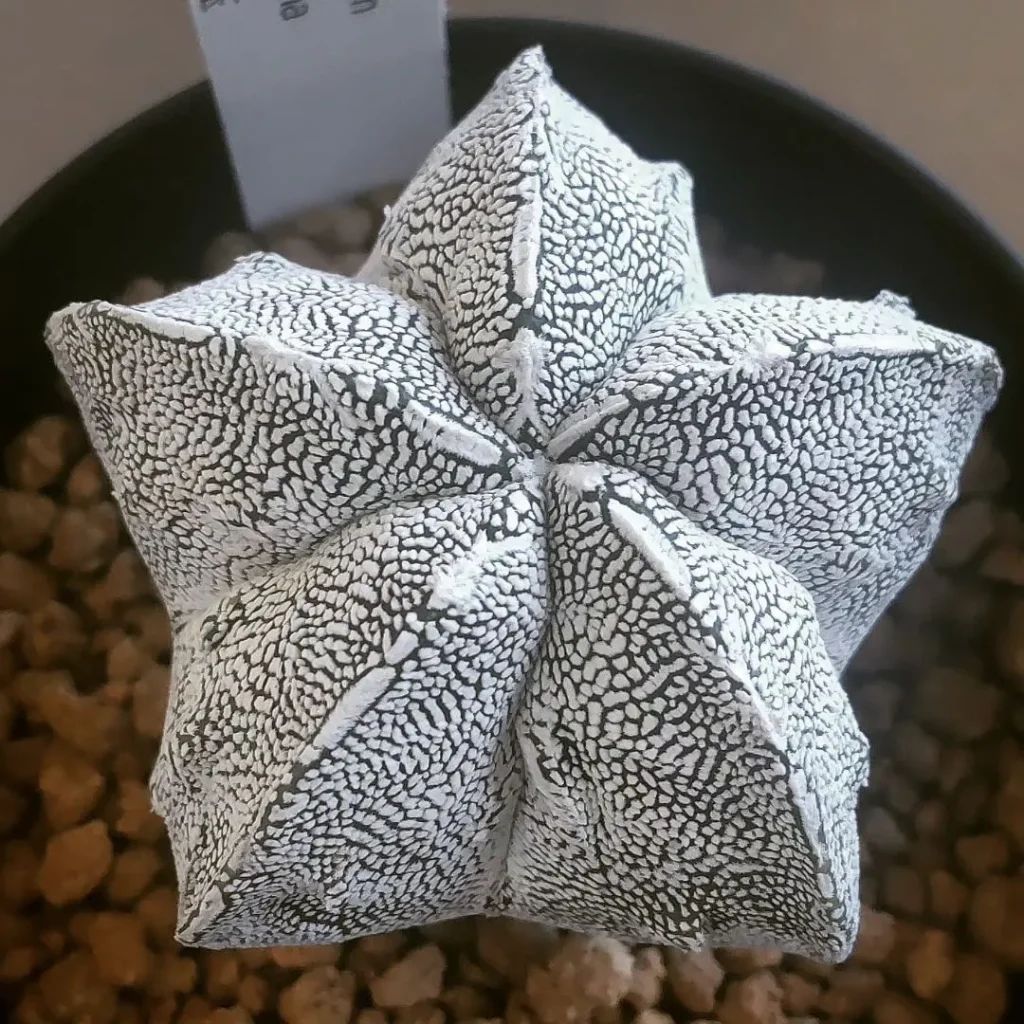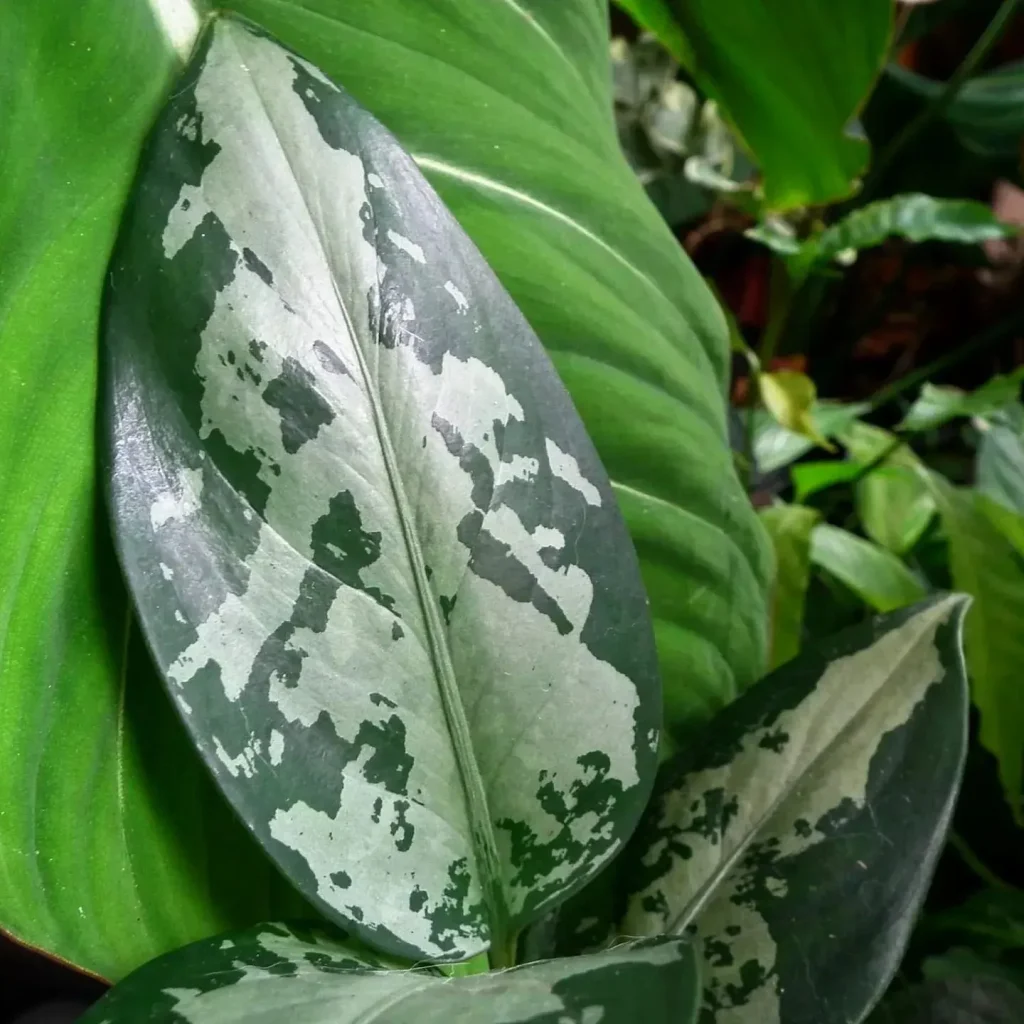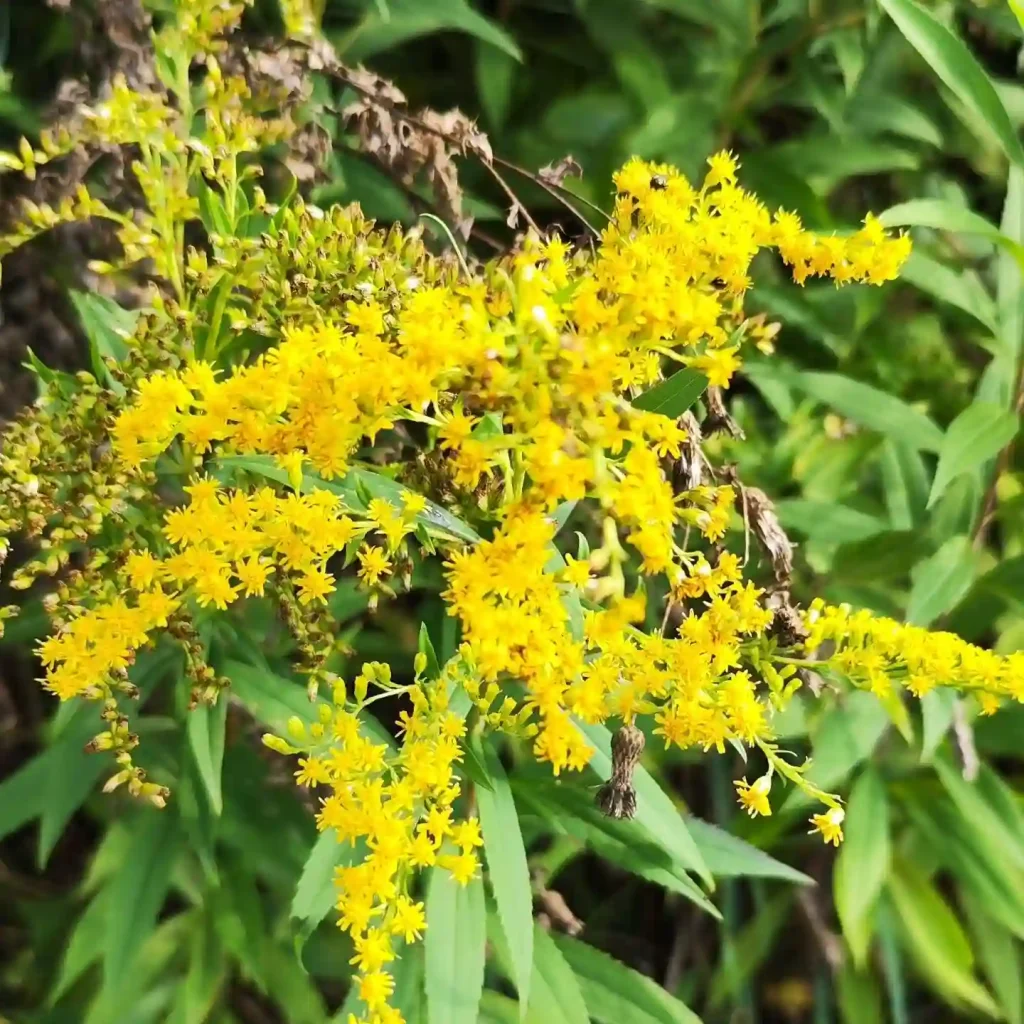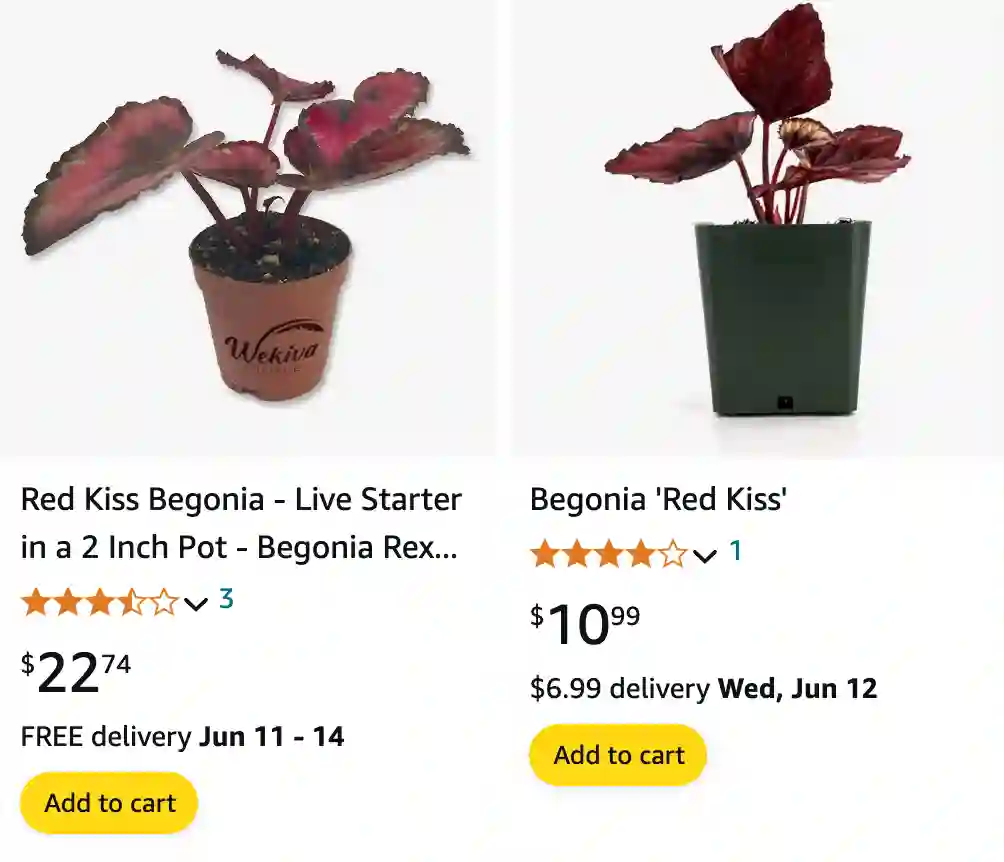
The Begonia Rex ‘Red Kiss’ stands as a captivating indoor plant, highly celebrated for its vibrant and distinctive foliage rather than its modest blooms. This cultivar, often referred to as a Painted-Leaf Begonia or Fancy-Leaf Begonia, captivates enthusiasts with its striking appearance: heart-shaped leaves displaying a metallic red hue, accented by a prominent black central area and a defined black border. When young, these leaves exhibit a shiny silver sheen. This report provides a comprehensive guide to understanding the characteristics, detailed care requirements, propagation methods, and common challenges associated with the Begonia Rex ‘Red Kiss’, offering essential knowledge for cultivating this exquisite houseplant.
Unveiling Begonia Rex ‘Red Kiss’: A Jewel of Foliage
The allure of Begonia Rex ‘Red Kiss’ lies predominantly in its dramatic and unique leaf coloration and texture. Its heart-shaped leaves are a vibrant, metallic red, featuring a large black area in the middle and a distinct black band around the edge. The glossy texture of its foliage further enhances its visual appeal. It is worth noting that the intensity of the red sections can vary; if the plant does not receive sufficient bright light, these areas may appear a paler green. This direct connection between light exposure and leaf vibrancy offers a crucial visual indicator for plant owners; a fading red suggests a need to re-evaluate light conditions.
Typically, Begonia Rex ‘Red Kiss’ is a small houseplant variety, characterized by a compact growth habit. It commonly reaches about 8 inches in height and width , with mature leaves extending up to 6 inches long. However, some sources indicate a potential for larger growth, reaching up to 12 to 24 inches in height and width under optimal conditions. This variability in mature size underscores that environmental factors such as light, water, and nutrient availability significantly influence the plant’s ability to achieve its full growth potential. Therefore, maximizing the plant’s size and vibrancy is directly linked to providing consistent and ideal care.
Beyond its aesthetic appeal, Begonia Rex ‘Red Kiss’ is also recognized as an air-purifying plant, adding a functional benefit to its ornamental value. Its “fancy-leafed” nature and captivating patterns truly set it apart, making it a highly desirable addition to any indoor plant collection.
Comprehensive Care Guide for Your ‘Red Kiss’ Begonia
Successful cultivation of Begonia Rex ‘Red Kiss’ hinges on understanding and consistently meeting its specific environmental preferences.
Light Requirements
Begonia Rex ‘Red Kiss’ thrives in bright, indirect light. Ideal placement includes areas where it receives filtered sunlight, such as through a sheer curtain, or spots that offer morning sun followed by afternoon shade. Direct sunlight is detrimental, as it can scorch the delicate leaves, causing them to brown or fade. Conversely, insufficient light will weaken the plant’s growth and can result in the signature metallic red sections appearing a pale green. During winter months, low light conditions may even lead to dormancy and leaf drop. The plant’s vibrant coloration serves as a direct indicator of its light exposure; a loss of the metallic red intensity often signals a need for more adequate indirect light.
Watering Wisdom
This begonia variety has medium watering needs. The most effective approach is to water the plant when the top inch or top half of the soil feels dry to the touch. When watering, it is crucial to do so thoroughly, ensuring that any excess water drains away completely. It is generally safer to slightly underwater than to overwater, as the plant is somewhat drought-tolerant.
A critical aspect of watering Begonia Rex ‘Red Kiss’ is to avoid getting water directly on the leaves. This plant is highly susceptible to powdery mildew and other fungal growth if its foliage remains wet. While some general plant care advice might suggest misting for humidity, for ‘Red Kiss’ and other Rex Begonias, this practice carries a significant risk of fungal issues. Therefore, direct leaf misting should be avoided. A simple method to check soil moisture before watering is to insert a finger into the soil.
Humidity & Temperature
As a plant native to tropical regions, Begonia Rex ‘Red Kiss’ thrives in high humidity, ideally 50% or higher. Since direct misting of leaves is not recommended, alternative methods to increase ambient humidity are essential. These include placing the plant on a pebble tray filled with water, ensuring the pot sits on the pebbles and not directly in the water , or using a humidifier nearby. Grouping plants together can also naturally elevate local humidity levels. Signs of insufficient humidity include dry, crunchy, or yellow edges on the leaves, or browning leaf tips.
The ideal temperature range for Begonia Rex ‘Red Kiss’ is consistent with average home temperatures, typically between 65°F and 75°F. More precisely, optimal day temperatures are 72°F–80°F, with night temperatures around 60°F–65°F. It is important to protect the plant from cold windows, drafts, and any extreme temperature fluctuations. Growth tends to slow down when temperatures fall below 60°F. While some varieties may tolerate temperatures as low as 50°F or as high as 90°F, maintaining the preferred range is key for robust growth.
Soil & Potting
Begonia Rex ‘Red Kiss’ requires an evenly moist, well-drained soil. A light, airy, and fast-draining peat-based potting mix is highly recommended due to its fine root system, which benefits from well-aerated soil. The ideal soil pH for this plant ranges from 5.7 to 6.4. Commercial potting mixes such as Pro-Mix, Sunshine Mix, or Baccto Professional are suitable for direct use. If planting in the ground, enriching the soil with organic compost and manure can significantly improve growth. Proper drainage is paramount; pots must have drainage holes, as the plant will quickly succumb to root rot in standing water. A relatively shallow pot is also advisable.
Fertilization
During its active growing season, typically spring and summer, Begonia Rex ‘Red Kiss’ benefits from regular fertilization. A liquid fertilizer applied at half strength every two weeks is recommended. It is important to refrain from fertilizing the plant from October until new growth emerges in the spring, allowing it a period of rest.
Quick Care Reference Guide for Begonia Rex ‘Red Kiss’
| Category | Requirement |
| Light | Bright, indirect light; avoid direct sun. |
| Water | Medium needs; water when top 1-2 inches of soil are dry. Avoid getting leaves wet. |
| Humidity | High (50%+); use pebble tray or humidifier. |
| Temperature | 65°F-75°F (18°C-24°C); avoid drafts. |
| Soil Type | Well-drained, airy, peat-based potting mix (pH 5.7-6.4). |
| Fertilization | Liquid fertilizer (half strength) every 2 weeks during growing season. |
| Mature Size | Typically 8-24 inches tall and wide. |
| Pet Toxicity | Toxic to cats and dogs if ingested. |
Propagating Your ‘Red Kiss’ Begonia: Expand Your Collection
Begonia Rex ‘Red Kiss’ is notably easy to propagate, offering multiple methods to expand a collection or share with others. A remarkable characteristic of begonias is their ability to regenerate completely from nearly any plant part.
Leaf Cuttings (Detailed Steps)
Propagating Begonia Rex ‘Red Kiss’ from leaf cuttings is a popular and effective method:
- Preparation: Begin by gathering all necessary supplies, including a clean, sharp cutting tool. To prevent fungal infections, which begonias are prone to, it is advisable to rinse all tools and hands in a solution of 1 teaspoon bleach per 1 quart of water. Prepare a tray by filling it with damp seed-starting mix.
- Take a Leaf Cutting: Select a healthy, fully grown leaf from the parent plant. Carefully cut the leaf along with its stem (petiole) from the main plant. The stem should then be discarded, leaving only the leaf blade.
- Make Vein Cuts: Flip the leaf over to expose its underside. Using a sharp knife or razor, make several 1/2-inch cuts across five or six of the largest veins, positioning these cuts approximately an inch from the central vein. These strategic cuts are the points from which new plantlets will emerge.
- Plant the Leaf: Turn the leaf back over and gently press it onto the surface of the seed-starting mix, ensuring that all the cuts make good contact with the soil. To maintain this contact and prevent the leaf from curling, use T-pins or small stones to hold it flat against the mix. It is important to avoid placing pins directly through main leaf veins. The emphasis on sterilizing tools and ensuring the leaf does not remain wet during this process directly addresses the plant’s susceptibility to fungal issues, connecting successful propagation to diligent disease prevention from the outset.
- Provide Environment: Cover the container with a humidity dome or plastic wrap. Crucially, ensure the plastic does not touch the leaves, as this can trap moisture and promote fungal problems. Maintain the cutting’s environment near 70°F (21°C) and provide ample humidity; this can involve misting the surrounding air daily and watering the soil weekly. Provide adequate light, such as fluorescent lights positioned 6 inches above the cuttings for about 12 hours daily, or a spot in an east-facing window. A heat mat set to approximately 70°F can accelerate the rooting process.
- Rooting & Transplanting: Roots typically begin to form in moist soil or water. New plantlets, or “baby plants,” should start to emerge within six to eight weeks. After about six weeks, the cuttings can be checked for rooting, and once established, the humidity dome can be removed, and the pot moved to a spot with more light.
Stem Cuttings
Another effective method involves stem cuttings:
- Selection: Choose healthy, mature stems for propagation, avoiding any that are old or woody.
- Preparation: Trim the selected stems to a length of 1 to 1.5 inches.
- Planting: Insert the trimmed stem into a light, well-drained soil medium, such as a seed starting mix, ensuring the petiole (the part connecting the leaf to the stem) is covered. Gently tamp down the soil around the cutting to hold it upright.
- Environment: Keep the planted cuttings consistently moist but not soggy, and position them out of direct sunlight for the initial few weeks to aid in their recovery and rooting. The use of humidity domes can also be beneficial.
Rhizome Division
For mature Begonia Rex ‘Red Kiss’ plants, division of the rhizomes is a viable propagation method, ideally performed in springtime. This involves carefully lifting the begonia out of its pot. Gently prod the dirt between the stalks to encourage the rhizomes to separate, aiming to untangle them naturally without excessive force. Once divided, replant the stalks with their roots into individual pots. Maintain consistent moisture (avoiding sogginess) and keep them out of direct sunlight for a couple of weeks to help them recover from the stress of division. Understanding that ‘Red Kiss’ is a Rex Begonia, which is a
Rhizomatous type , clarifies why rhizome division is a natural and effective propagation method, connecting its botanical classification to practical care techniques.
A notable advantage of begonias is their natural resistance to many common pests. This is attributed to the presence of oxalic acid in their leaves, which acts as a natural insect repellent.
Common Challenges & Solutions: Keeping Your ‘Red Kiss’ Thriving
Even with diligent care, Begonia Rex ‘Red Kiss’ can encounter certain pests and diseases. Prompt identification and appropriate intervention are crucial for maintaining plant health. Many visual symptoms can have multiple underlying causes, necessitating a systematic diagnostic approach for the plant owner.
Pests
- Mealybugs: These are common pests that appear as fluffy blobs in the crooks of leaves or at the joints between leaf and stem. They feed on plant sap and can lead to sooty mold.
- Treatment: Small infestations can be managed by dabbing mealybugs with a cotton swab dipped in rubbing alcohol. For larger issues, insecticidal soap or neem oil can be effective. Predator insects that specifically target mealybugs can also be introduced.
- Spider Mites: These pests thrive in hot, dry conditions.
- Symptoms: Initial signs include small yellow or whitish stippling (spots) on the foliage where chlorophyll has been removed. Heavy infestations can lead to reduced plant vigor, leaf drop, and visible webbing on the underside of leaves.
- Treatment: Insecticidal soap, summer oils, or miticides can be used for control.
- Aphids: These small, sap-sucking insects can impair growth and diminish aesthetic value.
- Symptoms: Yellowing, wilting, and stunted growth.
- Treatment: Treat infestations with insecticidal soap or neem oil.
Diseases
- Powdery Mildew: This is a prevalent fungal disease for begonias.
- Symptoms: Characterized by white powdery patches on leaves , sometimes accompanied by spotting and curling of foliage.
- Cause: Primarily caused by water sitting on the leaves and poor air circulation.
- Prevention/Treatment: Remove affected leaves promptly. Ensure good air circulation around the plant and keep foliage dry. Low-toxicity options include neem oil and horticultural oil. In severe cases, a systemic fungicide may be considered.
- Root Rot: A destructive fungal disease.
- Symptoms: Leaf crinkling, loss, and rot , wilting, discoloration, and decay of stems and roots.
- Cause: Almost always a result of overwatering, especially given the plant’s thin root system which is highly susceptible to excess water.
- Prevention: The most effective prevention is to allow the soil to dry out slightly between waterings. Using well-drained soil and pots with adequate drainage holes is also crucial.
- Other Fungal/Bacterial Issues:
- Mushrooms: Fungal growth affecting overall health and aesthetics, prevalent in humid environments.
- White Blotch: Fungal disease causing discolored patches on leaves, weakening the plant.
- Black Mold: Fungal disease manifesting as dark mold on leaves and stems, hindering photosynthesis.
- Soil Fungus: Impacts roots and stems, leading to wilting and decay.
- Bacterial Leaf Spot: Yellow lesions appear on the underside of leaves, turning brown and circular as they age.
Common Care Issues (Physiological Stress)
- Wilting Leaves or Leaf Loss: Can be caused by inadequate moisture (both overwatering and underwatering), root damage, pathogens, insufficient light, or low humidity.
- Leaves Overly Soft/Mushy: Often a sign of either overwatering or underwatering; achieving the correct moisture balance is key.
- Leaf Yellowing/Yellow Edges: A common symptom of environmental stress, disease, or nutritional deficiencies. It indicates poor health and can stunt growth.
- Leaf Tip Withering: Primarily caused by water stress or nutrient deficiencies.
- Dark Spots/Spots: Typically necrotic areas that can signal disease, poor cultural conditions, or pest problems.
Troubleshooting Common Begonia ‘Red Kiss’ Problems
| Symptom | Potential Cause(s) | Solution/Action |
| Leaf Crinkling, Loss, Rot | Overwatering, Root Rot | Adjust watering frequency; ensure soil dries between waterings; check drainage. |
| Leaves Overly Soft/Mushy | Overwatering, Underwatering | Check soil moisture; adjust watering carefully. |
| Fluffy Blobs (Leaves/Stems) | Mealybugs | Remove with alcohol-soaked cotton swabs; apply insecticidal soap or neem oil. |
| White Powdery Patches on Leaves | Powdery Mildew | Remove affected leaves; increase air circulation; avoid misting leaves; use neem oil/horticultural oil. |
| Wilting Leaves / Leaf Loss | Overwatering, Underwatering, Low Light, Low Humidity, Pests, Root Damage | Assess all care factors; adjust watering, light, humidity; check for pests/root rot. |
| Yellowing Leaves / Yellow Edges | Environmental Stress, Nutrient Deficiency, Disease, Low Humidity | Evaluate light, water, humidity; consider balanced fertilizer; check for pests/diseases. |
| Leaf Tip Withering | Water Stress, Nutrient Deficiency | Adjust watering; ensure proper humidity; consider fertilization. |
| Dark Spots / Discolored Patches | Disease (e.g., Leaf Blotch), Poor Cultural Conditions, Pests | Identify specific disease/pest; adjust care; apply appropriate treatment. |
Toxicity Alert
It is important to note that Begonia Rex ‘Red Kiss’ is toxic to cats and dogs if ingested. Some varieties of Rex Begonia can also be toxic to humans if ingested. As a general precaution, all houseplants should be kept out of reach of small children and pets. In the event of ingestion, contacting a veterinarian is recommended.
‘Red Kiss’ vs. The Rest: A Comparative Look at Begonia Varieties
Begonia Rex ‘Red Kiss’ belongs to the broader category of Rex Begonias, also known as Painted-Leaf or Fancy-Leaf Begonias. These are a significant grouping within the Rhizomatous Begonia family. Rhizomatous Begonias are characterized by a thickened underground stem, or rhizome, which grows horizontally and sprouts new sections. This underlying botanical classification helps explain its compact growth habit and why methods like rhizome division are effective for propagation.
How ‘Red Kiss’ Compares to Other Rex Begonias
Rex Begonias are primarily cultivated for their colorful, textured, and uniquely shaped foliage, which can include heart, swirl, or ivy-like forms. They are generally compact plants.
‘Red Kiss’ distinguishes itself with its metallic red leaves, featuring a large black center and a black edge. It is a small-leaved cultivar with a compact growth habit. It is worth noting that some descriptions of ‘Red Kiss’ also mention a silver leaf with green hues and black margins and center. This variation in description, from metallic red to silvery-green, may reflect different cultivar variations, stages of maturity, or the direct impact of light exposure on coloration, as light significantly influences the intensity of red hues. This dynamic appearance underscores the importance of consistent optimal light conditions to bring out its most vibrant colors.
Other popular Rex Begonia varieties share the focus on striking foliage but offer distinct appearances:
- ‘Red Tango’: Features metallic reddish-purple foliage with silver edges, with its color intensifying with more light.
- ‘Flamenco’: Displays beautiful silver-green leaves with red and green veining.
- ‘Ballet’: Known for its silvery-green leaves with mid-green edges and distinctive red stems.
- ‘Silver Limbo’: A compact, small-leafed variety with stunning metallic-silver foliage and purple-red undersides.
- ‘Spitfire’: Showcases reddish-pink leaves with silver and green edges.
- ‘Tornado’: Features dark green leaves accented with sprays of bronze, silver, and deep purple.
- ‘Yamileth’: An eye-catching variety with green-black leaves that transition to silver towards the edges.
‘Red Kiss’ vs. Other Popular Rex Begonias
| Variety Name | Key Foliage Description | Unique Features/Growth Habit |
| Begonia Rex ‘Red Kiss’ | Metallic red with large black center and black edge; young leaves shiny silver. | Small-leaved, compact growth habit; primarily admired for foliage. |
| Begonia Rex ‘Red Tango’ | Metallic reddish-purple with silver edges. | Color intensifies with more light. |
| Begonia Rex ‘Flamenco’ | Silver-green with red and green veining. | Expands to 8 inches wide and tall. |
| Begonia Rex ‘Ballet’ | Silvery-green leaves with mid-green edges; red stems. | Beautiful contrast in colors. |
| Begonia Rex ‘Silver Limbo’ | Metallic-silver foliage with purple-red undersides. | Compact, small-leafed variety. |
| Begonia Rex ‘Spitfire’ | Reddish-pink leaves with silver and green edges. | Stunning and vibrant coloration. |
| Begonia Rex ‘Tornado’ | Dark green leaves with bronze, silver, deep purple accents. | Exotic appearance. |
| Begonia Rex ‘Yamileth’ | Green-black leaves turning silver towards edges. | Particularly eye-catching. |
‘Red Kiss’ in the Broader Begonia Family
Beyond the Rex Begonias, the genus Begonia encompasses a vast array of types, each with distinct characteristics:
- Semperflorens Group (“Wax Begonias”): Popular as bedding plants, these have erect stems and glossy round leaves, often green or bronze. They produce numerous small flowers in shades of red, pink, and white and are typically grown as annuals.
- Cane-like Begonias (“Angel Wing Begonias”): Characterized by erect, bamboo-like stems and highly asymmetric, wing-shaped leaves that can be shiny, hairy, colorful, or dotted. Their flowers are usually small and come in red, pink, and white.
- Shrub Begonias: These plants produce many shoots from the soil, forming a full, bushy plant, making them ideal for bedding. They often have unique leaves and mostly white flowers, though pink and red varieties have been cultivated. Their size can range significantly, from 1 to 12 feet across.
- Trailing-Scandent Begonias: Perfect for hanging baskets, these plants can climb trees or fill ground cover gaps in their native habitats. They cascade beautifully with white or pink flowers.
- Thick-Stemmed Begonias: These are less common and more challenging to cultivate. They typically have one or two upright stems that do not branch naturally. Their showiest aspect is often their thick stems, as they tend to lose lower leaves as they grow.
Ideal Companion Plants for ‘Red Kiss’
Begonia Rex ‘Red Kiss’ pairs well with other houseplants that share similar light and humidity preferences, creating visually appealing arrangements :
- Caladiums: Their vibrant, heart-shaped leaves echo the bold colors of Rex Begonias and have similar light and humidity requirements.
- Ferns: The delicate, lacy fronds of ferns provide a beautiful textural contrast to the bold, patterned leaves of ‘Red Kiss’, thriving in similar humid, low-light environments.
- Peace Lily: The broad, green leaves and white flowers of Peace Lilies offer a calming, neutral backdrop that allows the vibrant begonia foliage to stand out.
- Spider Plant: With their arching, variegated leaves, Spider Plants introduce a dynamic contrast in texture and add vertical interest to an arrangement.
- Fittonia (Nerve Plant): The intricate veining on Fittonia leaves harmonizes well with the detailed patterns of Rex Begonias, contributing to a cohesive and colorful display.
- Purple Shamrock (Oxalis): The deep purple leaves of Oxalis create a striking color contrast with the bright and metallic tones of ‘Red Kiss’.
- African Violets: These plants provide small bursts of color and share the same preference for high humidity and bright, indirect light as Rex Begonias.
- Colorful Aglaonema and Zebra Plant: These also offer vibrant or bold foliage that complements the ‘Red Kiss’.
Conclusion: Your Thriving ‘Red Kiss’ Journey
The Begonia Rex ‘Red Kiss’ is an undeniably stunning houseplant, primarily valued for its extraordinary foliage rather than its flowers. Cultivating this plant successfully requires a clear understanding of its specific needs: consistent bright, indirect light to maintain its vibrant metallic red coloration, careful watering to prevent both root rot and the development of powdery mildew on its leaves, and a consistently high humidity environment.
While some sources describe Rex Begonias as “easy to care for” , others categorize ‘Red Kiss’ care as “difficult”. This apparent contradiction is resolved by understanding that the plant is indeed good-natured and low-maintenance
if its particular sensitivities are understood and consistently addressed. Its vulnerability to overwatering and fungal issues when leaves get wet, along with its specific humidity requirements, means that success hinges on attention to these details. For gardeners who are mindful of these specific conditions, the ‘Red Kiss’ proves to be an incredibly rewarding addition to any collection.
By applying the comprehensive knowledge presented in this guide—from understanding its unique characteristics and providing optimal environmental conditions to effectively propagating and troubleshooting common issues—plant enthusiasts can ensure their Begonia Rex ‘Red Kiss’ thrives. Embracing these practices will lead to a flourishing plant, allowing its captivating beauty to be fully appreciated and enjoyed for years to come.
If i die, water my plants!
